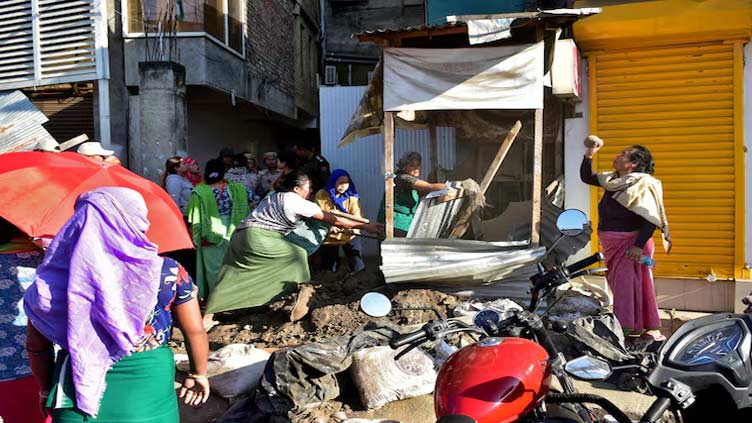Why has ethnic violence escalated in India's Manipur state again?

World
Police had arrested 23 people so far
MANIPUR (Reuters) - Hundreds of people defied a curfew to stage demonstrations in India's northeastern state of Manipur over the weekend and 23 were arrested for violence as tensions between two ethnic communities flared up again.
These are the reasons behind the violence in the border state.
HOW DID THE MANIPUR VIOLENCE BEGIN?
On May 3, 2023, members of the Kuki and Naga tribes, who inhabit Manipur's hills and are regarded as Scheduled Tribes, or India's most disadvantaged groups, launched a protest against the possible extension of their benefits to the dominant Meiteis.
The Meitei have sought special benefits for more than a decade, but received a fillip in April last year after the Manipur High Court recommended the state government should consider the demand and set a deadline of mid-May.
Meiteis account for half of Manipur's population and extending limited affirmative action quotas to them would mean they would get a share of education and government jobs reserved for Kukis and Nagas.
Meiteis have traditionally lived in Manipur's more prosperous valley region that makes up 10% of the state's area.
They have also had better access to employment and economic opportunities. Nagas and Kukis live in the poorly developed hill regions.
The imbalance in development that has favoured the valley over the hills has been a point of contention and rivalry between the ethnic groups.
WHAT WERE THE TRIGGERS?
The groups co-existed peacefully until unrelated events in 2023 exposed old faultlines.
Manipur shares a nearly 400-km (250-mile) border with Myanmar and the coup there in 2021 pushed thousands of refugees into the Indian state.
Kukis share ethnic lineage with Myanmar's Chin tribe and Meiteis feared they would be outnumbered by the arrival of the refugees.
WHY IS PEACE YET TO RETURN?
Both the Meiteis and Kukis are known to be flush with arms, including automatic weapons either stolen from the state police or sourced from Myanmar.
The Indian Army and federal paramilitary forces in the state cannot act independently and are legally bound to work with state police and authorities, who analysts say are also divided along ethnic lines.
Kukis also accuse Biren Singh, the chief minister of the Bharatiya Janata Party-ruled state and a Meitei, of complicity in violence against them and have sought his removal. Singh denies the accusations.
WHAT IS BEHIND THE LATEST SPIRAL OF VIOLENCE?
The latest violence flared this month after a 31-year-old Kuki woman was found burned to death in a village in Jiribam district, an area that was untouched by the conflict until June.
Kuki groups blamed Meitei militants for the act.
Kukis and Meiteis have moved to separate parts elsewhere in Manipur since the clashes last year but Jiribam still has a mixed population, leading to tensions and violence.
Days after the incident, 10 armed Kuki men were killed in a gunfight with security forces after they tried to attack a police station in Jiribam district, and security forces retaliated. During this gunfight, a Meitei family of six people went missing.
On Friday, bodies of three of the six were found floating in a river, triggering angry protests in the state capital Imphal.
Police said on Sunday they had arrested 23 people for ransacking and setting fire to the homes of lawmakers and ministers, in a second straight day of unrest in the area.



